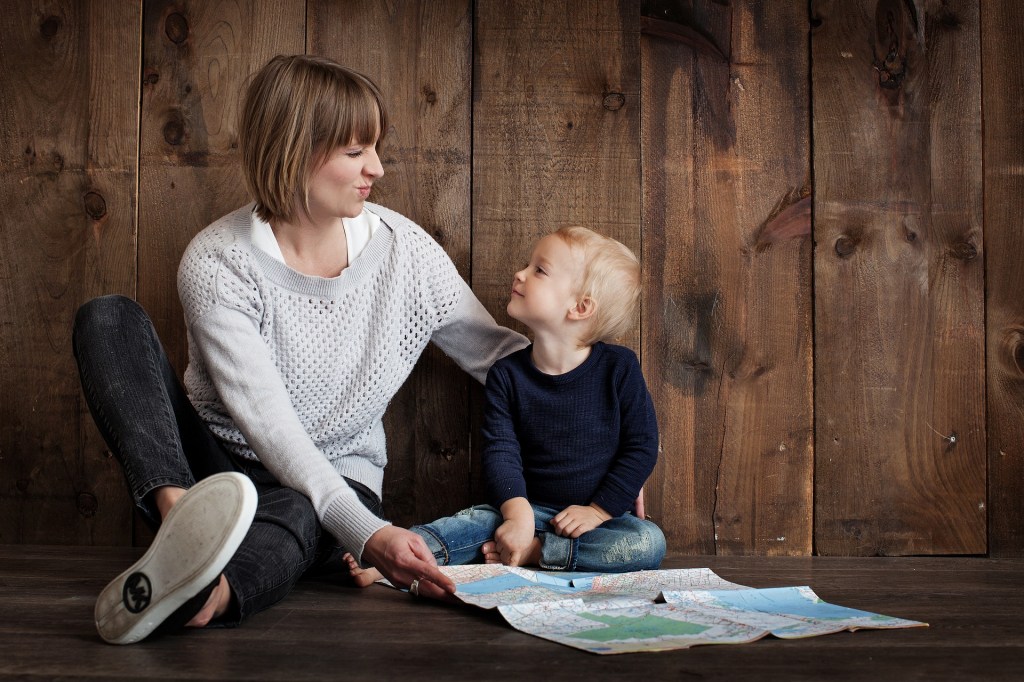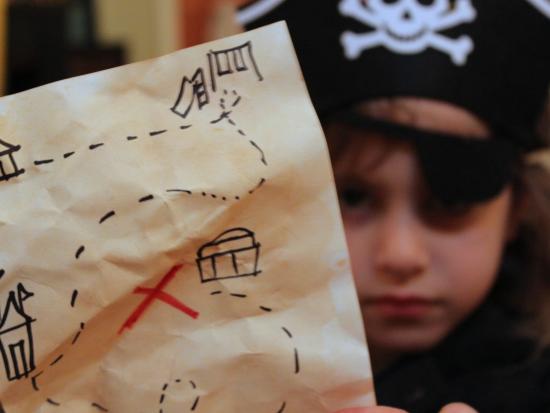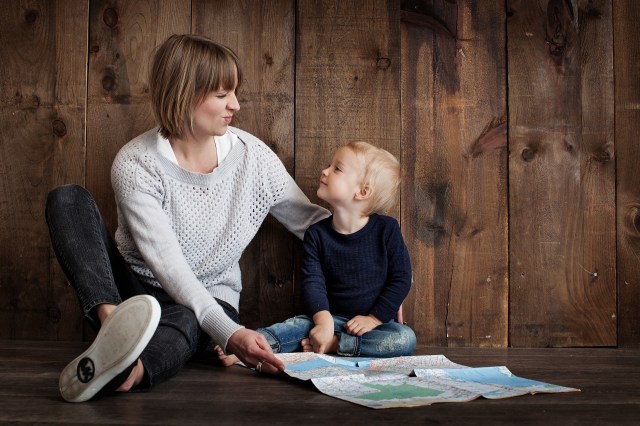While we may never again have to wrestle with an akimbo paper map while ambling down the interstate, there are plenty of good reasons to pass proper map-reading skills down to the next generation. From spatial awareness to instilling a sense of adventure, maps are magical and learning how to use one can start at almost any age. Read on for our tips on how to teach your little navigators a thing or two.

Tiniest Travelers: Toddlers and Preschoolers (Ages 2-4)
Don’t depend on these kids to direct to the nearest gas station, but little ones as young as one and two years old can get familiar with directional terms, just by hearing you use them often.
Words to use frequently: right and left, farther and nearer, here and there, and above and below.
Things to observe together: The sun rising and setting, the movement of the moon and stars, even their own height as marked on a wall.
Tools to use: A globe or oversized map; Easy maze puzzles; a My Place in the World DIY Project.

Kindy-pendent Explorers (5-9)
From kindergarten through third grade, kids’ awareness of their surroundings explodes and they are able to grasp more abstract ideas (like symbols on a flat piece of paper representing real places and distances).
Terms to Talk About: North, South, East and West; the compass rose; The sun rising in the east, setting in the west; feet and miles.
Things to Do Together: Make a map of their bedroom or your own backyard; try to find and study new maps where ever you go: malls, bus or train stops, the library.
Tools to Use: A compass, a collection of local maps; a DIY treasure map project!
–Erin Feher
Featured image: Pixabay
RELATED STORIES:
Everything You Need to Know About Geocaching with Kids
How to Plan a Pirate Treasure Hunt
No-Work Scavenger Hunts You Can Print Out Now











